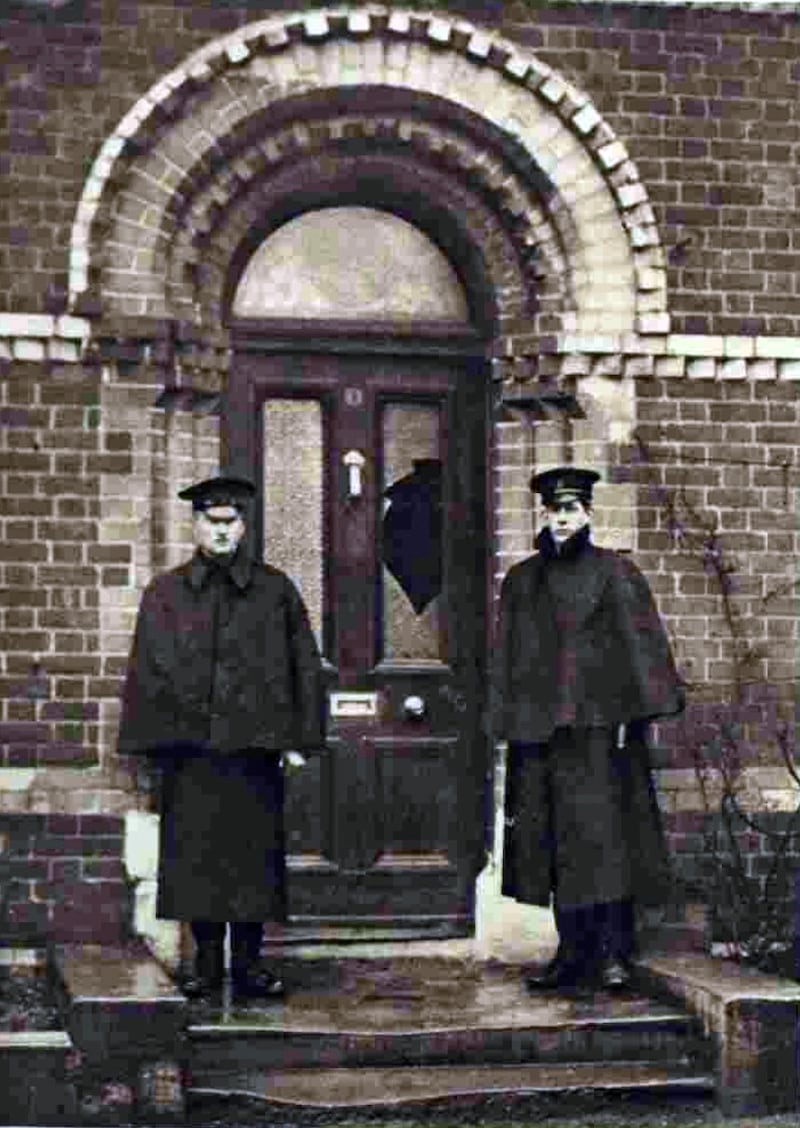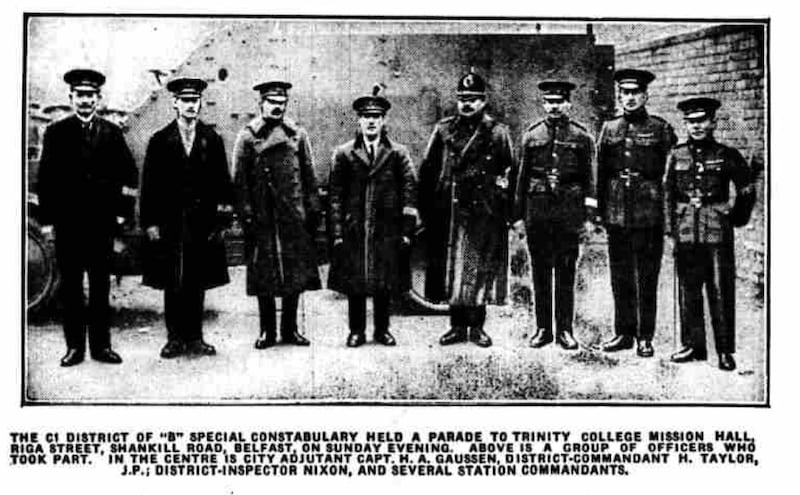A large grey ledger with a Crown symbol and “George V” written on the front lay forgotten for nearly a century in the magnificent Norman limestone keep of Norwich Castle in the east of England.
Inside, the ledger held Royal Norfolk Regiment intelligence reports from Belfast in 1922 detailing the sectarian violence erupting then in the city, which left hundreds dead, predominantly Catholics.
Curiously, a century on, the files record the battles the Norfolk soldiers fought there not with the Irish Republican Army (IRA), but with members of the Royal Irish Constabulary (RIC) and loyalist gangs, killing members of both.

And they record the most notorious of the sectarian killings that plagued Belfast that year – the slaughter by a loyalist gang of prosperous Belfast Catholic publican Owen McMahon, four of his six sons and an employee in the family’s home in north Belfast.
READ MORE
It was a massacre intended to strike fear into the hearts of the city’s middle-class Catholics.
Making no attempt to hide their identities, four of the killers on March 22nd, 1922, wore RIC uniforms when they broke into the McMahon’s home on Kinnaird Terrace, off the Antrim Road.
McMahon, along with his sons, Bernard (26), Frank (24), Patrick (22), John (19), Thomas Gerald (15) and Michael (11), and an employee, Edward McKinney (26), were taken to the diningroom.
There, the murder gang’s leader told them to say their prayers, before shooting Owen McMahon. The rest were shot in turn, bar the 11-year-old Michael. Nineteen-year-old John survived; the rest fell to the guns.
For a century, many historians have believed that the leader that night was RIC inspector John Nixon, though during his life Nixon won two libel cases against newspapers who dared to make that charge in print.

Now, University College Dublin historian Edward Burke has written Ghosts of a Family, which investigates the killings cited as justification by one of the IRA assassins of Field Marshall Henry Wilson – the act that triggered Ireland’s Civil War.
[ Ghosts of a Family review: Superlative account of the sectarian McMahon murdersOpens in new window ]
The gang’s leader, Burke believes, was not Nixon, though Nixon had other blood on his hands. Instead, he blames David Duncan, a man “marked by paranoia and sudden acts of extreme violence” and who died in Canada.
Sectarian violence in Belfast was nothing new from 1920. By the Treaty’s signature in December 1921, 198 people had been killed. Violence surged again in early 1922. In March, 69 more were killed, including the McMahons.
By then, just a quarter of the city’s population was Catholic, but they numbered more than half of the dead. However, the “annihilation” of the McMahons had a class element to it: “It was a family that exemplified the nationalist success of the previous 50 years,” says Burke.
“They had allied themselves with leading nationalists like Joe Devlin, with the Catholic Church, and had made an enormous success for themselves and were living this comfortable existence,” says Burke.
“So, this was hugely shocking because people thought, ‘Am I next? Even Joe Devlin thought they were coming for him. So, will they attack the Catholic Church? Who? Lawyers, journalists, anyone?
No prosecutions took place, though local gossip in north Belfast quickly identified Duncan, who had served with the Royal Irish Rifles in Flanders and Gallipoli but ended the war as an alcoholic.
Later, he joined the Auxiliaries, but he was dismissed for misconduct in December 1921. Returning to Belfast, he joined the Ulster Imperial Guards, quickly joining in on its sectarian attacks across Belfast where they clashed with the Norfolks.
Following their arrival in Belfast, the Norfolk Regiment quickly became hated by Catholic after meting out violence on the Falls Roads. Soon, however, they were praised for “being quite as ready to shoot Orangemen as Shinners”.
Learning as they went, the Norfolks urged reform of the RIC, warning that “if they don’t investigate atrocities and prosecute, then they will completely lose the faith of the Catholic population, possibly indefinitely”, says Burke.
“Here is a British regiment that is the primary obstacle to loyalist murder. The IRA is not capable of mustering the same resistance. That is why the IRA did not target the Norfolks,” says the UCD historian, “that’s one thing that gets missed”.
The Norfolk intelligence officer who highlighted much of the co-operation between RIC officers and loyalist gangs was Eric Hayes, who later finished the second World War as a major general in Asia.
There, one of his top aides was Ian Freeland, who later led Royal Anglian soldiers (the successor to the Norfolks) back on to the streets of Belfast on August 15th, 1969, when a new generation of strife had begun.
“It’s the same regiment. Yet Freeland has no institutional memory of what his own regiment did in the 1920s. They had the information in their own archives. They were warned that it would come back to haunt them if they didn’t act,” says Burke.
In truth, it suited no one to remember.
For “understandable reasons”, Burke says, given what happened after 1969, the Irish State did not have “a lot of appetite” to remember that British soldiers had been “instrumental” in defending Catholic areas in Belfast against loyalists half a century before.

“For the British, it was seen to be embarrassing, having British soldiers shooting police officers on the streets of a UK city. That wasn’t something that the British state wanted to remember, either,” he adds.
Illustrating the shadows left by history, Martin McAlinden, a member of the Official IRA, was killed in May 1974 by British soldiers along with another member of the Official IRA in a ruined farmhouse near Newry, Co Armagh where explosives later found.
His mother Anne was the daughter of Owen McMahon’s only sister. Later, one of her sons described her as scrupulously law-abiding. However, he said, she could never respect or trust police she blamed for the murder of her uncle and cousins 52 years before.
Ghosts of a Family: Ireland’s Most Infamous Unsolved Murder, the Outbreak of the Civil War and the Origins of the Modern Troubles, by Edward Burke is published by Merrion Press

















